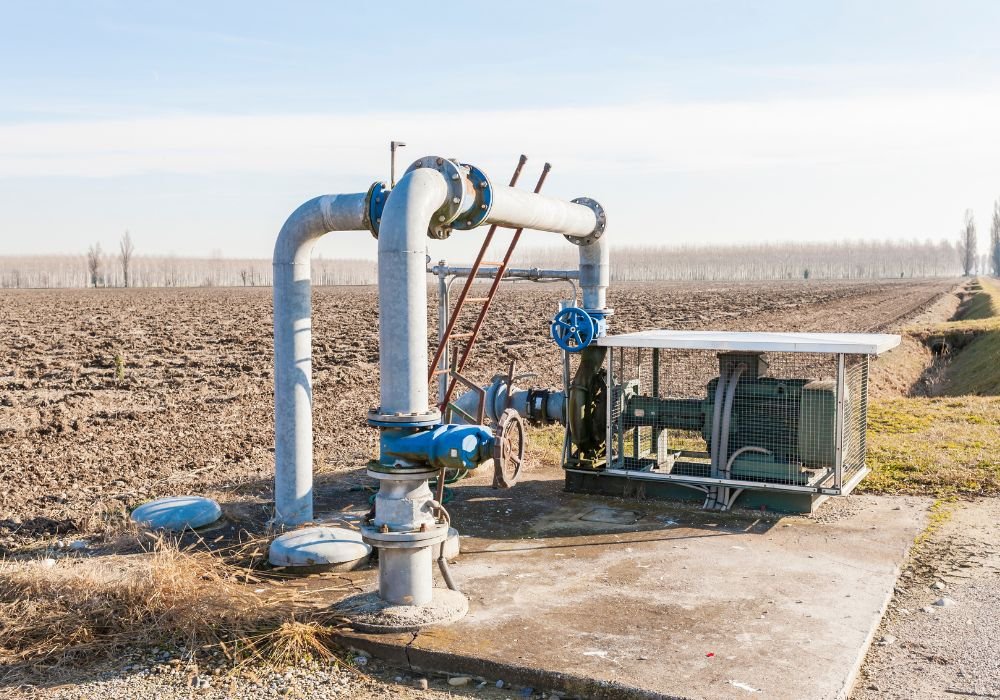Last updated on February 12th, 2024 at 12:07 am
Before you choose a water pump, you need to get a basic understanding of how water pumps work and why they’re used. The following information will help you make a better decision when you’re choosing a water pump for your business or residence.
No one can deny it. Water is an essential resource in our daily lives. You simply cannot survive without it. Therefore, water pumps play a vital role in ensuring that everyone can access clean and safe water.
But what exactly are water pumps and how do they work? Why are they so important in both industrial and residential settings?
Introduction to Water Pumps and Parts

Water pumps are mechanical devices designed to move water from one location to another. They play a crucial role in various applications, including residential, commercial, agricultural, and industrial settings. Water pumps are used for activities such as supplying water to buildings, draining flooded areas, irrigating fields, circulating water in cooling systems, and more.
Water pumps consist of several essential parts that work together to achieve the desired outcome. Here are some of the key components commonly found in water pumps:
Pump Housing: The pump housing, also known as the casing or body, is the outer shell that encloses the internal components of the pump. It provides protection and support to the internal parts.
Impeller: The impeller is a rotating component inside the pump housing that generates centrifugal force. It consists of curved blades or vanes that spin rapidly when the pump is in operation, pushing the water outwards and creating pressure.
Inlet and Outlet: The inlet is the entry point where water enters the pump, while the outlet is the exit point through which water is expelled. These openings are strategically positioned to facilitate the flow of water.
Motor: Most water pumps are powered by electric motors. The motor provides the necessary rotational energy to drive the impeller and move water. It is typically connected to the impeller via a shaft.
Seals: Seals are used to prevent water from leaking out of the pump housing. They ensure a tight and secure connection between the stationary and rotating parts, maintaining the pump’s efficiency.
Bearings: Bearings support the rotating shaft and reduce friction, allowing smooth operation of the pump. They help to maintain proper alignment and minimize wear and tear on the moving parts.
Control Mechanism: Some water pumps feature control mechanisms such as switches, valves, or pressure regulators. These components help regulate the flow rate, pressure, and on/off operation of the pump.
Suction and Discharge Lines: Suction lines draw water into the pump from the water source, while discharge lines carry the pumped water to its intended destination. These lines are typically made of durable materials and may include fittings and connectors for easy installation.
Strainer or Filter: To prevent debris and solid particles from entering the pump and causing damage, a strainer or filter is often incorporated into the suction line. It traps larger particles, allowing only clean water to flow into the pump.
Where Water Pumps Are Used
Water pumps play an important role in many different industries, such as agriculture, construction, and manufacturing. In agricultural settings, water pumps are used for irrigation systems, sprinklers, and other farm equipment.
Construction sites also use water pumps to remove excess water from the site or to provide a water supply for workers. Manufacturing facilities use water pumps to move liquids and gasses through the production process.
Residential homes also rely on water pumps for a variety of needs. Many homes have a well that provides them with their own private water supply. A water pump is necessary to bring the water up from the well so it can be used in the home.
Some homes also have swimming pools or hot tubs that require a pump to circulate the water. Sump pumps are used to prevent floods, pumping water out of the house into a storm drain.
Types of Water Pumps
There are many different types of water pumps, each with its own unique purpose and function. Common types of water pumps include the following:
1. Centrifugal Pumps: These common pumps work by using an impeller to create a centrifugal force that moves the liquid through the pump. You can see examples of these pumps featured by the Red Lion products brand on its website.
2. Submersible Pumps: These pumps are designed to operate underwater and are often used for draining pools or wells. They work by using a hermetically sealed motor that is placed in the liquid being pumped. Pumps may be used to move wastewater, to serve as sump pumps, or for dewatering at construction sites.
3. Piston Pumps: These massive pumps use a piston to move fluids and are often used in high-pressure applications or hydraulic system designs.
Final Thoughts
Red Lion Products are renowned for their premium water pumps and parts, offering exceptional quality and performance. With a strong emphasis on durability and reliability, It ensures that their products meet the highest standards in the industry.
Whether you need a water pump for residential, commercial, or industrial applications, Ithas a wide range of options to suit your needs. From their sturdy pump housings and efficient impellers to their powerful motors and reliable seals, every component is designed to deliver optimal results.
As you can see, using a water pump is not something to take lightly. Read about each pump’s features and base your choice on what you need in terms of economy and efficiency.




